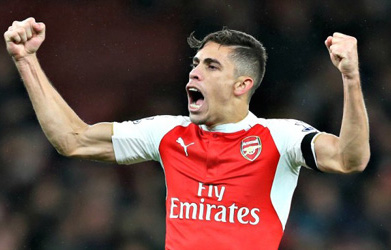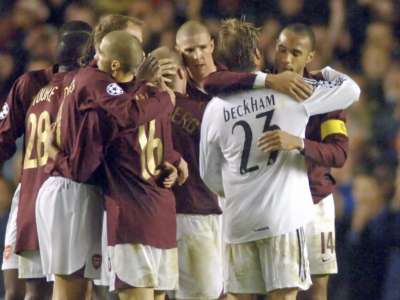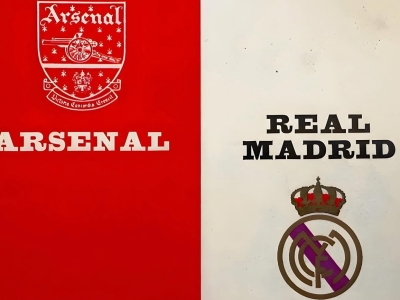So StatDNA, eh? Told Arsene Wenger to buy Gonzalo Higuain (he didn’t), would have told him not to buy Park and Chamakh (he did), not to buy Antonie Griezmann when he was at Real Sociedad (rather than trust his instincts) and told him to buy Gabriel Paulista from Villarreal.
I read on Le Grove that Arsene Wenger has not sold a player for more than £15 million since Robin van Persie back in 2012, the conclusion being that the manager doesn’t improve the value of players he buys anymore, in spite of the amounts spent in the transfer market going into hyperdrive. Gabriel was sold back to Spain, at the age of 27, so in theory about to enter his peak years, for less than the club paid for him back in January 2015.
There is an article on the purchase of Gabriel (and the use of StatDNA, the company that Arsenal purchased so they could have exclusive use of its results) on the website for the French Le Temps newspaper – if your browser automatically translates into English you can make sense of it well enough to realize that StatDNA’s analysis, although undoubtedly detailed, has its limitations.
And the main one with Gabriel is that StatDNA didn’t take account of three factors -
1 – The importance of communication between team-mates, especially in defensive situations.
2 - Gabriel didn’t speak a word of English.
3 – He wouldn’t be motivated to learn enough to give an interview in English after living in London for two and a half years. So for example, in May 2017, when he gave an interview for the official website … it was conducted in Portuguese.
I know Arsene Wenger doesn’t like his players shouting at each other, but it would be helpful if they at least spoke the same language. Perhaps it is one of the reasons the manager is famed for saying very little at half-time in the dressing room. His words would be lost on some of the players. I suspect the sheer number of colleagues in the squad that could speak Spanish allowed Gabriel to get by from day to day without feeling the need to learn English, but I wonder if he ever had a conversation about defensive strategy with Per Mertesacker, Laurent Koscielny or Petr Cech.
The initial signs when the Brazilian arrived were promising. He looked tough and uncompromising, up for a battle. However, he was positionally questionable and naïve when it came to dealing with fellow countryman Diego Costa. Basically, not quite good enough.
Stats would suggest Arsenal commanded the game at Stoke last Saturday evening, with their 77% possession. But the only stat that matters is that the number of goals scored exceeds the number conceded. You don’t need a computer to work that one out.
Clever recruitment seems to be an issue at Arsenal since the stadium move. Yes, there have been some successes, although many of those would be qualified. But more critically, I suspect what matters is what happens after a player is with the club. Contrast Marco Alonso’s career at Sunderland and Chelsea for an example. The comfort bubble Wenger allows his charges, often overpaying them (Carl Jenkinson, on £2.3 million a year isn’t going anywhere until his contract expires in 2020, unless it's on loan with Arsenal covering at least 50% of his wages), does not develop a team ethos like that we have seen where other ‘smaller’ clubs have gained success – Atletico Madrid, Borussia Dortmund and Leicester City come to mind. Huddersfield Town are demonstrating how a team with by far inferior resources can achieve great things (by which I mean promotion to the Premier League, although I’d say with their manager they have a decent chance of remaining in it).
Stats don’t tell you anything about team spirit or what a player can contribute under different coaches. Gabriel may have turned out to be a better buy if he was forced to learn the language and if the approach to winning football matches incorporated more psychology than technique. Who knows? But under the current regime, stats or not, there is something missing. The use of stats in the transfer market to improve the team’s chances on the field have proved a failure (and it is interesting to note that Wenger rejected the stats telling him to buy Juventus’ midfielder Mario Lemina, who joined Southampton instead during the close-season).
Ultimately, whatever criteria are used to purchase players, what really matters is what happens after the signing has been made. And that comes from Arsene Wenger. In the next three Premier League matches, Le Boss will face two managers with a very contrasting style to his own – Klopp and Conte, and one who seems to be cut from the same cloth – Eddie Howe. One thing that does seem certain, with the amount Premier League clubs can afford to pay, more and more talented managers will be coaching in England, and a good one can achieve results with a group of players that have been bought by others before him, regardless of the reason they were bought.
As to when we might see that at Arsenal… well, my guess is about ten years’ time!








